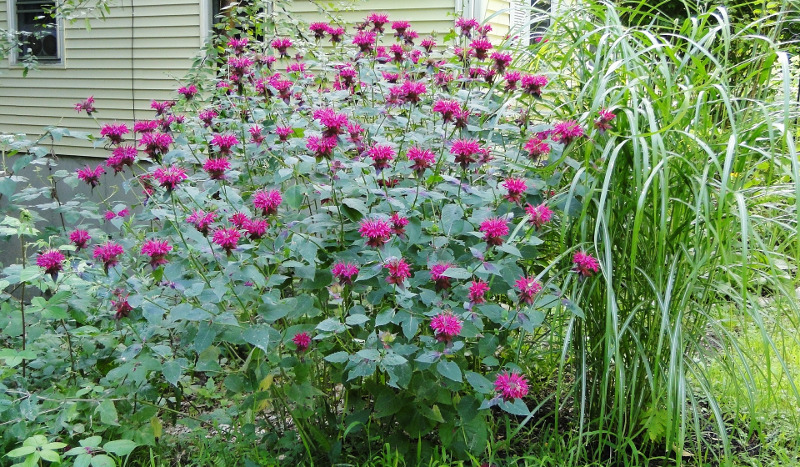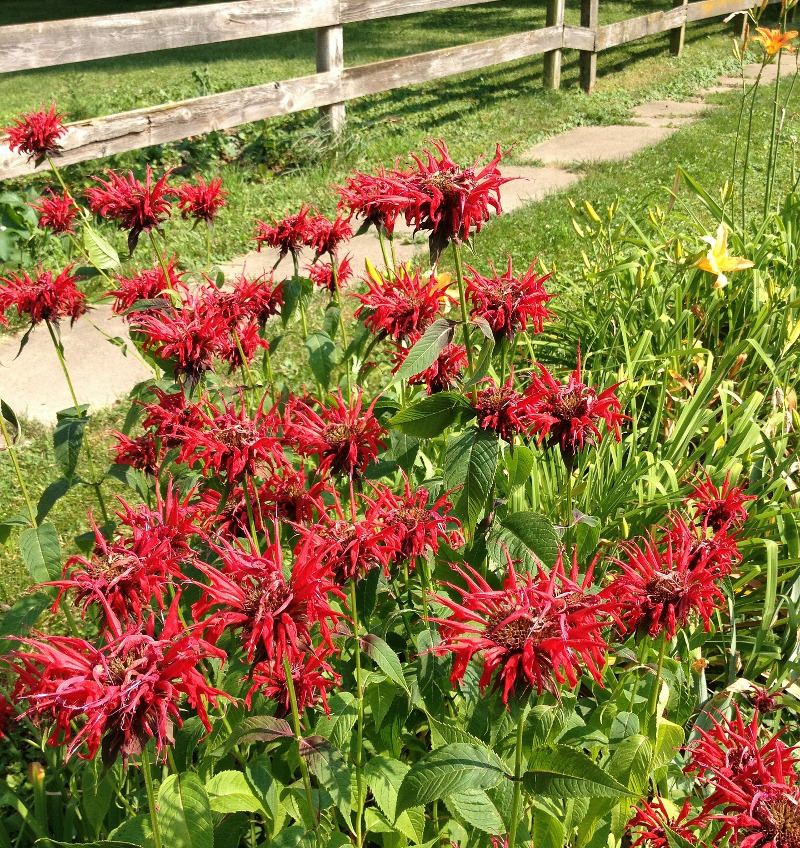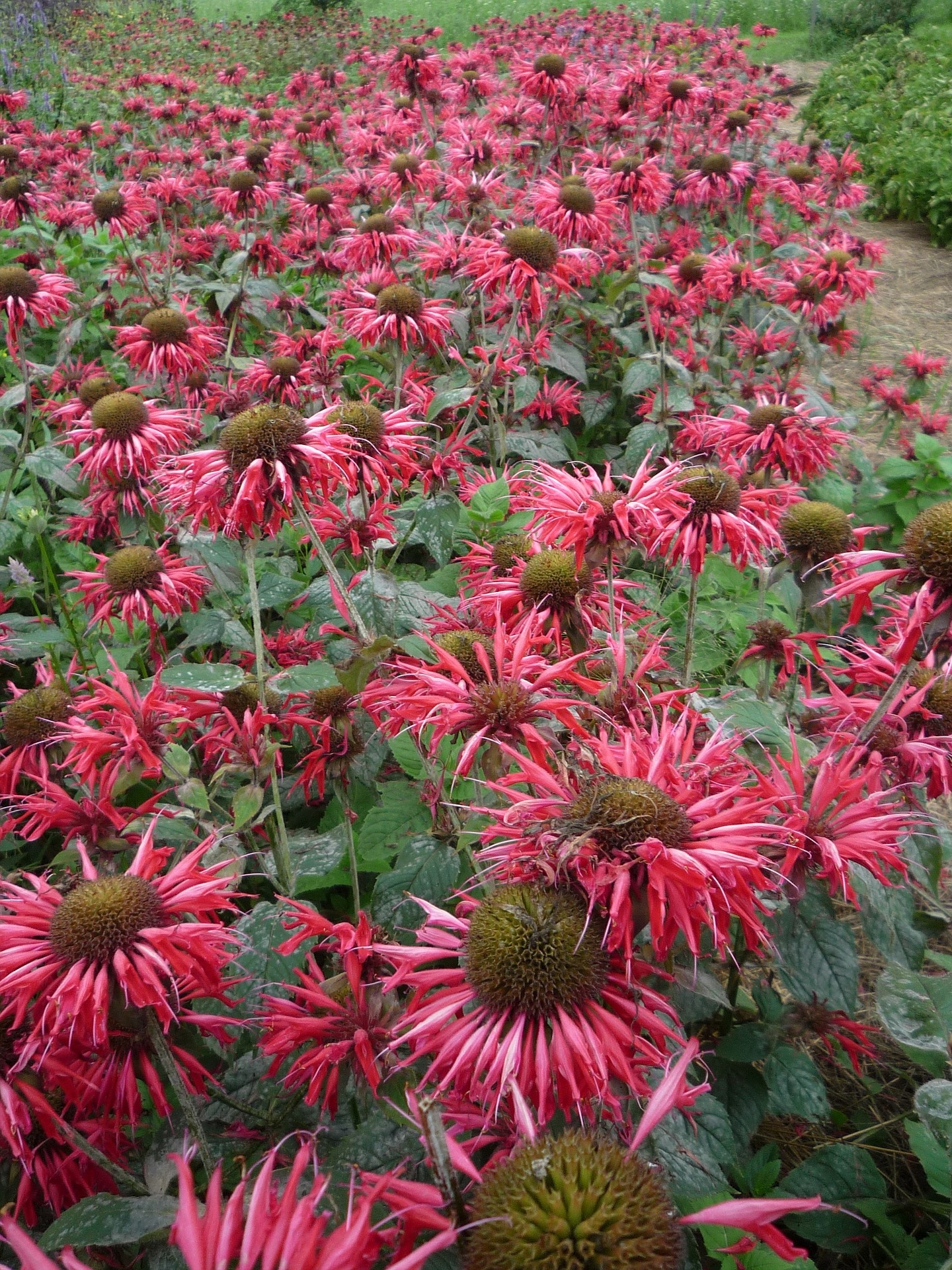Bee balm is a favorite choice of gardeners for it’s pretty blooms of pink, purple, red or white. Bee balm (Monarda) is a perennial flowering herb in the mint family. Common names include Oswego tea and bergamot.
It’s fragrant blooms attract hummingbirds, butterflies and bees. Native to North America and hardy in zones 3-9, this plant can grow up to 4 feet tall with a spread of 3-4 feet. It makes it a great background plant in flower gardens.
Best planted in full sun, the bee balm can handle shade in hotter climates.

What You Need To Plant Bee Balm
- Shovel
- Compost or manure
- Garden spade
- Stake to secure plant until established
- Mulch
- Full sun
Where to Plant Bee Balm
Plant bee balm in an area that gets full sun. It can be planted in partial sun, but will not produce as many blooms. Bee balm prefers an evenly moist, nutrient rich soil with a pH between 6 and 7. Too wet or too dry soils are not tolerated well, so be sure that the area drains well. To prevent a powdery mildew from developing on it’s leaves, this plant requires good air circulation. Adding compost when planting will help to improve air flow as well and control weeds.

Bee Balm Spacing
Bee balm is a bushy plant in the mint family. It grows in clusters and spreads quickly. Growing 3-5 feet tall with a spread of 3-4 feet, these plants should be spaced 18-24 inches apart. Bea balm has shallow spreading roots and can become invasive quickly. Dividing the plant helps to control this. Due to its height, bee balm is most pleasing when planted in the center or back of a garden.
Steps To Plant Bee Balm
Step 1- Loosen soil and mix in compost
Step 2- Dig a hole slightly larger than the root ball (1-2 feet between each hole)
Step 3- Place the plant so it is level with the soil surface.
Step 4- Fill with soil and gently pat down
Step 5- Water thoroughly
Step 6- Mulch to help soil stay moist
Plant in well drained, moist soil that gets full sun.
When to Plant Bee Balm
Bee balm can be planted in the spring or early fall. Spring is a good time to plant seeds, preferably right after the last frost. Transplanting bee balm can be done in spring or fall, when the weather is cooler.

Transplanting Bee Balm
Bee balm is part of the mint family and has a history of spreading quickly. We recommended dividing it every 2-3 years for its health and the health of the surrounding plants. Splitting the plant helps with vigorous growth the following season.
One of the easiest ways to plant bee balm is to divide it. Cautiously dig up the plant you are removing. Cut through the thicker roots and pull sections apart. Be sure each section has a few inches of root still remaining on it.
Simply replant in a new garden bed or in a pot. Water thoroughly. This is best done during the early spring after the last frost.
In late spring, bee balm can be propagated by cutting. Cut 6 inches of new growth from the tip of the stem. Dip the stem in a rooting hormone. Place the cuttings in a small pot with perlite, potting mix, or peat moss. Water well and cover with a plastic bag. Watch carefully and water as needed until the plant roots- usually 2-4 weeks. When ready, re-pot into a container until you are ready to permanently plant in a garden.
 |
Author Chris Link - Published 01-15-2021 |
